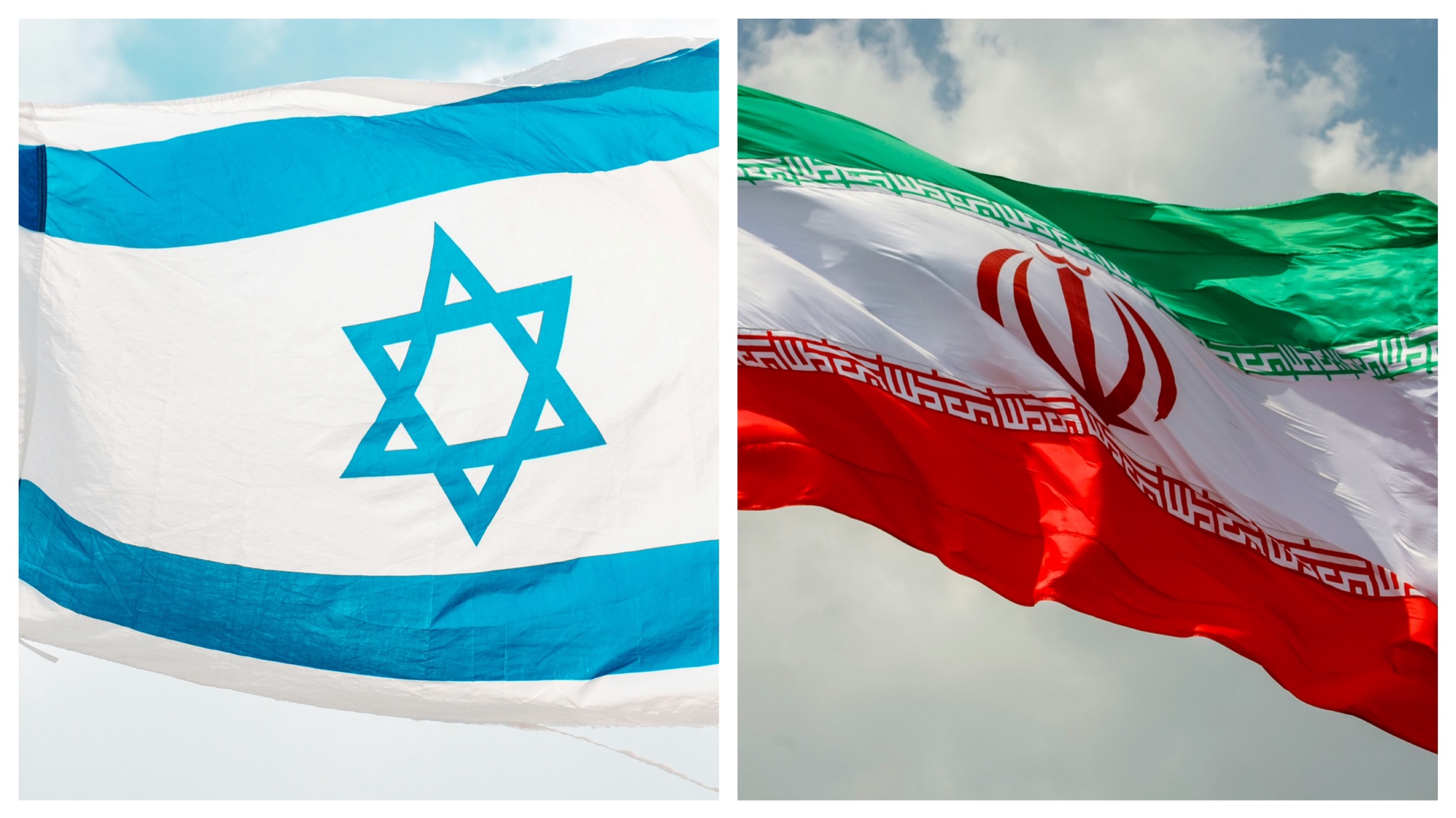The hostility between Iran and Israel is rooted in a complex history, marked by profound ideological, religious, and geopolitical tensions. Despite not sharing borders, the two nations are deeply entangled in a rivalry that has shaped regional dynamics and global politics for decades. This enmity involves clashing national identities, conflicting visions for the Middle East, and a strategic struggle for influence that has manifested in proxy wars, regional alliances, and aggressive rhetoric. This article delves deeper into the roots, evolution, and current state of the Iran-Israel conflict, exploring how these factors contribute to a relationship defined by hostility.
Historical Context
1. Early Relations: Cooperation Under the Shah (1948–1979)
Before 1979, the relationship between Iran and Israel was one of pragmatic cooperation rather than hostility. Under the reign of Mohammad Reza Shah Pahlavi, Iran maintained close ties with Israel, driven primarily by shared strategic interests. Both countries were non-Arab states in a predominantly Arab region, and both faced hostility from Arab nationalist regimes. The Shah’s secular and pro-Western stance aligned with Israel’s aspirations for regional stability and countering Soviet influence. Economic cooperation flourished, particularly in oil trade, with Iran supplying Israel with much-needed resources. Intelligence sharing and military cooperation were also significant components of their relationship, with both nations seeing themselves as bulwarks against Arab radicalism.
2. The 1979 Islamic Revolution: A Dramatic Shift
The 1979 Iranian Revolution radically transformed the regional balance and the trajectory of Iran-Israel relations. The overthrow of the Shah and the establishment of the Islamic Republic under Ayatollah Ruhollah Khomeini introduced a new ideological framework rooted in political Islam and anti-Zionism. Khomeini’s regime viewed Israel as a symbol of Western imperialism and an illegitimate colonial entity occupying Muslim lands. The revolutionary government immediately severed all ties with Israel, shifting from cooperation to overt hostility. This marked a turning point where ideological conflict became the driving force behind Iranian foreign policy, with Israel singled out as a central enemy.
Ideological Foundations of Hostility
1. The Clash Between Political Islam and Zionism
At the core of the Iran-Israel conflict lies a profound ideological clash between Iran’s revolutionary Shia Islam and Israel’s Zionist foundation. Iran’s theocratic government perceives itself as the vanguard of Islamic resistance against Western domination and injustice in the Muslim world. In this worldview, the existence of Israel is not merely a political issue but a theological affront. Zionism, which seeks the establishment and preservation of a Jewish state, directly contradicts the Islamic Republic’s commitment to the Palestinian cause and its belief in the unity of the Islamic ummah (community). For the Iranian regime, opposing Israel is both a religious duty and a political imperative.
2. The Role of Anti-Zionism in Iranian Identity
Anti-Zionism has become a defining element of the Islamic Republic’s identity, serving as both a domestic tool and a foreign policy strategy. Internally, anti-Israel sentiment is used to rally public support, unite various political factions, and legitimize the regime’s authority. Public events, including the annual Quds Day rallies, are organized to express solidarity with the Palestinian cause and denounce Israel. Externally, Iran’s opposition to Israel enhances its standing among certain Arab and Muslim communities, positioning it as a leader in the resistance against perceived Western and Israeli aggression. The regime’s ideological commitment to the destruction of Israel is enshrined in official statements, policies, and even military doctrine.
Geopolitical Dimensions
1. The Struggle for Regional Hegemony
Beyond ideology, the rivalry between Iran and Israel is deeply rooted in competing visions for the Middle East. Iran aspires to be the dominant power in the region, leveraging its resources, strategic position, and network of allies to project influence. Israel, meanwhile, seeks to maintain its security and preserve its regional standing by countering any threats to its existence. This competition is reflected in the two nations’ alliances and interventions across the Middle East. Iran’s strategy involves cultivating a “Shiite Crescent” stretching from Tehran to the Mediterranean, encompassing Iraq, Syria, and Lebanon. This strategy is designed to encircle Israel and challenge its influence while securing Iran’s geopolitical interests.
2. The Nuclear Issue: Existential Threat or Strategic Leverage?
The question of Iran’s nuclear program is perhaps the most critical aspect of the rivalry. Israel views the possibility of a nuclear-armed Iran as an existential threat, arguing that a nuclear Iran would embolden Tehran’s aggressive posture and potentially lead to a catastrophic confrontation. Israeli leaders, both past and present, have stated that they would never allow Iran to acquire nuclear weapons and have taken covert and diplomatic measures to prevent this outcome. This includes cyberattacks, assassinations of key nuclear scientists, and lobbying for stringent international sanctions. For Iran, its nuclear program serves as both a deterrent and a symbol of resistance, asserting its sovereignty in the face of international pressure and portraying itself as a defender of Muslim rights against Zionist aggression.
Proxy Conflicts: Battlegrounds of the Iran-Israel War
1. Hezbollah: The “Sword of Iran” in Lebanon
One of the most significant manifestations of the Iran-Israel rivalry is through proxy conflicts, with Hezbollah being Iran’s most prominent ally in its confrontation with Israel. Established in the early 1980s with Iranian backing, Hezbollah has evolved into a powerful paramilitary and political force in Lebanon, serving as a critical component of Iran’s regional strategy. The group’s extensive arsenal, bolstered by Iranian funds and weaponry, poses a direct threat to Israel’s northern border. Over the years, Hezbollah and Israel have engaged in numerous skirmishes and a full-scale war in 2006, which resulted in significant destruction but also bolstered Hezbollah’s reputation as a formidable adversary. For Iran, Hezbollah acts as a deterrent against Israel, providing Tehran with a means to strike at Israel without direct confrontation.
2. The Syrian Civil War: A Stage for Escalation
The Syrian civil war further intensified the Iran-Israel rivalry, as it brought Iranian forces and their allied militias, including Hezbollah, closer to Israel’s borders. Iran’s intervention in Syria was aimed at preserving the Assad regime, which is a crucial ally in Tehran’s axis of resistance. For Israel, the presence of Iranian military infrastructure and proxy forces near the Golan Heights represents an intolerable threat. In response, Israel has carried out hundreds of airstrikes targeting Iranian positions and weapon shipments in Syria, aiming to disrupt Tehran’s supply lines to Hezbollah and curb its entrenchment in the region. These strikes, coupled with Iranian retaliatory measures, have brought the two countries dangerously close to direct conflict.
3. Gaza and Hamas: Expanding Iran’s Reach
While Hezbollah is the cornerstone of Iran’s strategy in Lebanon, Tehran has also extended support to Palestinian groups like Hamas and Islamic Jihad in Gaza. Although Hamas is primarily Sunni, Iran has provided financial and military support as part of its broader strategy to destabilize Israel and maintain pressure on multiple fronts. The recurrent escalations between Israel and these Gaza-based groups serve Iran’s interests by keeping the conflict with Israel active, distracting Israeli resources, and reinforcing Tehran’s image as a champion of the Palestinian cause.
Diplomatic Maneuvers and Regional Alliances
1. Israel’s Response: Normalization and Counterbalancing
To counter Iran’s influence, Israel has pursued a strategy of normalization with Arab states, many of which share Israel’s concerns about Iranian expansionism. The Abraham Accords, signed in 2020, marked a historic shift in regional dynamics by formalizing peace agreements between Israel and several Gulf states, including the UAE and Bahrain. These agreements, which have received tacit support from Saudi Arabia, are part of a broader effort to isolate Iran diplomatically and build a coalition that can counterbalance Tehran’s influence. For Israel, these alliances are not just about economic and security cooperation but also about creating a united front against Iranian ambitions.
2. Iran’s Axis of Resistance: Building a Coalition of Militias
In contrast, Iran has focused on solidifying its “Axis of Resistance,” a network of state and non-state actors that includes Syria, Hezbollah, various Shiite militias in Iraq, and the Houthi rebels in Yemen. This axis allows Iran to project power across the region, challenge Sunni Arab states aligned with Israel, and keep pressure on Israel through multiple theaters of conflict. Tehran’s support for these groups is driven by a mix of ideological commitment, strategic interests, and a desire to maintain leverage over its adversaries. The deep entrenchment of these proxy forces ensures that any direct confrontation between Iran and Israel would quickly escalate into a broader regional conflict.
Conclusion
The hatred between Iran and Israel is the product of a multifaceted conflict driven by a combination of historical grievances, ideological opposition, and geopolitical rivalry. While their early relationship was marked by cooperation, the 1979 revolution fundamentally altered the trajectory of Iran-Israel relations, introducing a powerful ideological dimension to the conflict. Since then, the struggle has evolved into a broader contest for influence in the Middle East, with both nations employing proxies, pursuing alliances, and engaging in covert warfare to advance their objectives.
For Iran, opposition to Israel is deeply embedded in its revolutionary ideology, religious narrative, and regional aspirations. For Israel, the Iranian threat is existential, leading to a policy of containment and preemption. The ongoing proxy wars, the nuclear issue, and the shifting alliances in the region suggest that this conflict is unlikely to be resolved in the foreseeable future. As long as both nations continue to view each other as irreconcilable enemies, the Iran-Israel rivalry will remain one of the most dangerous and destabilizing factors in the Middle East.




